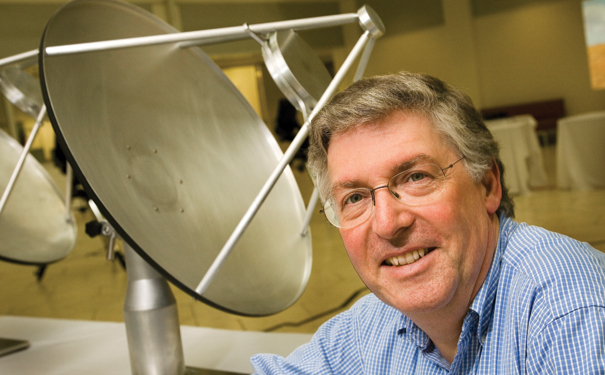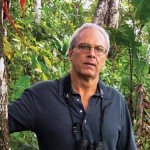
Dr Peter Quinn, Western Australia's Premier's Fellow in Astronomy. Image: International Centre for Radio Astronomy Research (ICRAR)
Following a career that has included stints at NASA and the European Southern Observatory, Dr Peter Quinn now has a brief to bring Australia the most exciting new space project of the new millennium — one that could change the way we view the universe.
Working on the Australian and New Zealand pitch to bring the Square Kilometre Array (SKA) telescope to the West Australian desert, Dr Quinn hopes to secure a bright future for up-and-coming astrophysicists. “Like a lot of scientists, I looked to spending the last few years of my career building things and helping to build things. [For example] a large piece of equipment to pass onto the next generation.”
Heading up the International Centre for Radio Astronomy Research (ICRAR), a joint initiative of the University of Western Australia, Curtain University of Techonology and the West Australian government, Quinn believes the new information the SKA telescope will deliver will forever change our understanding of the universe.
“[The SKA] is a time machine that gets us back to when the very first objects were forming. It’s like page one of the book,” he says. “Right now, it’s like reading a novel with the first few pages ripped out.”
Quinn already has an impressive track record when it comes to developing high-profile, highly advanced space technology. From 2006 he worked for the European Southern Observatory. “I went there to build the largest optical infrared telescope in the world,” he says.
With South Africa also in the running to host the SKA telescope, Quinn is confident Australia has a strong chance of securing the project. The winning site will need to meet a number of specific variables, including having a patch of land of up to 3000 kilometres that is “very radio quiet”.
“When you ask for all those things to be happening at the same time, Australia is the only place where all of those things are possible.”
With the decision to be made “probably towards the end of 2011,” the SKA will open up huge scope for discovery and advances to be made in the field of astrophysics. “It’s an incredible time. We’re at one of those “˜Galileo’ moments again.”
The SKA campaign accounts for only part of Quinn’s busy schedule. He is also working to build up the facilities of ICRAR “to an international level,” is an academic supervisor and continues his career-long investigation into dark matter.






